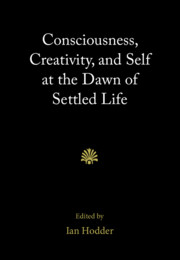Book contents
- Consciousness, Creativity, and Self at the Dawn of Settled Life
- Consciousness, Creativity, and Self at the Dawn of Settled Life
- Copyright page
- Contents
- Contributors
- Acknowledgments
- Part I Introduction to the Themes, Site, and Region
- 1 Introduction to the Themes of the Volume
- 2 Hunter-Gatherer Home-Making? Building Landscape and Community in the Epipaleolithic
- Part II Higher Levels of Consciousness
- Part III Greater Innovation and Creativity
- Part IV Greater Awareness of an Integrated Personal Self
- Notes
- Index
- References
1 - Introduction to the Themes of the Volume
Cognition and Çatalhöyük
from Part I - Introduction to the Themes, Site, and Region
Published online by Cambridge University Press: 22 February 2020
- Consciousness, Creativity, and Self at the Dawn of Settled Life
- Consciousness, Creativity, and Self at the Dawn of Settled Life
- Copyright page
- Contents
- Contributors
- Acknowledgments
- Part I Introduction to the Themes, Site, and Region
- 1 Introduction to the Themes of the Volume
- 2 Hunter-Gatherer Home-Making? Building Landscape and Community in the Epipaleolithic
- Part II Higher Levels of Consciousness
- Part III Greater Innovation and Creativity
- Part IV Greater Awareness of an Integrated Personal Self
- Notes
- Index
- References
Summary
Over recent years, a number of scholars have argued that the human mind underwent a cognitive revolution in the Neolithic. This book seeks to test these claims at the Neolithic site of Çatalhöyük in Turkey and in other Neolithic contexts in the Middle East. The volume brings together cognitive scientists who have developed theoretical frameworks for the study of cognitive change, archaeologists who have conducted research into cognitive change in the Neolithic of the Middle East, and the excavators of the Neolithic site of Çatalhöyük, who have over recent years been exploring changes in consciousness, creativity, and self in the context of the rich data from the site.
- Type
- Chapter
- Information
- Publisher: Cambridge University PressPrint publication year: 2020
References
- 1
- Cited by



